Ballet
Nouvelles+
Tchaikovsky and the Creation of Swan Lake
by John Hart
19 avril 2022
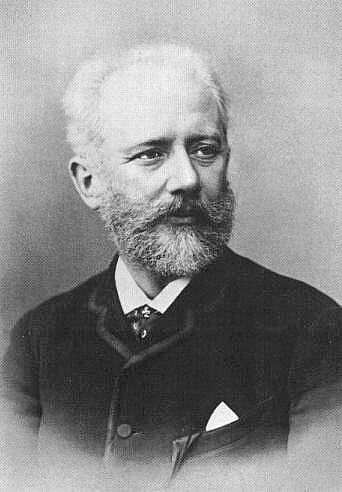
Pyotr Ilyich Tchaikovsky.
Born in 1840, Pyotr Ilyich Tchaikovsky’s first commission for ballet came in 1875, toward the end of what is considered his early career. That work, Swan Lake, would become one of the most iconic ballets in the world – recognized by name, choreography and its unforgettable score. But the ballet was a flop at first. Although his scores for The Sleeping Beauty (1889) and The Nutcracker (1892) saw more success during his lifetime, Tchaikovsky didn’t live long enough to see Swan Lake fully embraced.
Tchaikovsky was close to one of his sisters and her seven children. In 1871, according to one of his nephews, Tchaikovsky created a ballet-pantomime for the children called The Lake of the Swan, which included the oboe theme he later used in Swan Lake. Tchaikovsky composed the score and danced all the parts himself, which delighted his nieces and nephews, until he was red in the face and exhausted.
Several years later Tchaikovsky accepted the commission for Swan Lake, “partly because I need the money and partly because I have long cherished the desire to try my hand at this kind of music,” he wrote to a friend. Previous music for ballet had been decorative, a way to string together divertissements to showcase dancers but Tchaikovsky sought to bring drama to the music itself and applied his genius for melody, his symphonic approach and colourful orchestration.
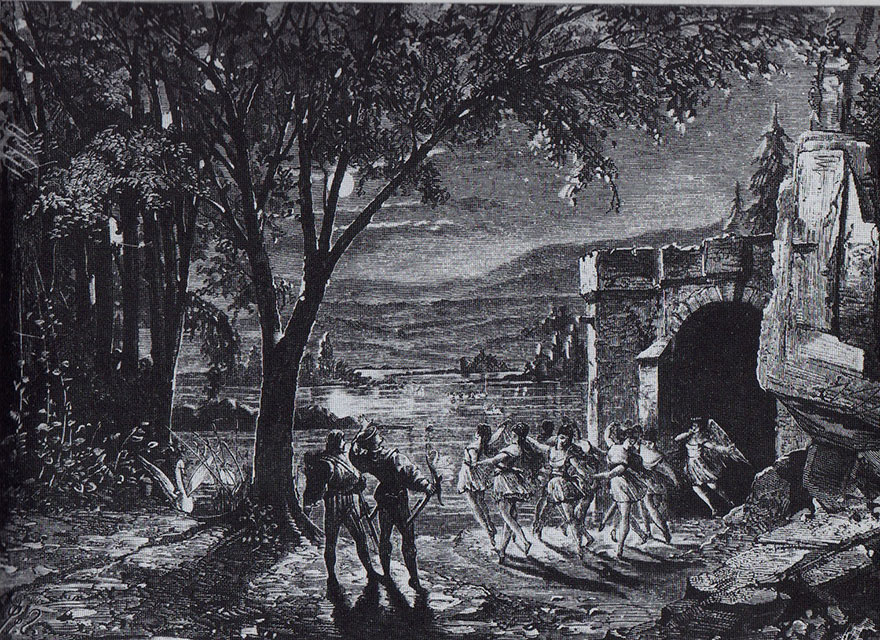
Design by F. Gaanen for the décor of Act 11, Moscow in 1877.
Also at the time, a ballet’s librettist, composer, choreographer, costume designer and set designer worked independently, without collaboration, so often the resulting productions were a confusing mess. That changed in 1883 when impresario Ivan Vsevolozhsky was appointed as director of the Imperial Theatres; Petipa and Tchaikovsky worked in close collaboration on The Sleeping Beauty and The Nutcracker, ensuring greater harmony between scenario and score.
The first staging of Swan Lake, which debuted on 4 mars, 1877 at the Bolshoi Theatre in Moscow, featured choreography by German ballet master Julius Reinsinger. He had declared Tchaikovsky’s score was undanceable, so he eliminated various parts and replaced them with music by other composers. Allegedly his unimaginative choreography consisted of processions and various forms of calisthenics. Similarly, the leading ballerina, the three designers and the orchestra members were all castigated for their mediocre talents.
The ballet was revised in 1880 by Belgian choreographer Joseph Hansen, but that production was also disappointing. Tchaikovsky remained pleased with the score and in 1888 he conducted a performance of the music in Prague. Afterwards, he wrote in his diary that it was a “moment of absolute happiness.”
After Tchaikovsky’s death in 1893, a memorial matinee was held at the Mariinsky Theatre on 1 mars, 1894 in his honour. For the program, Lev Ivanov choreographed the first lakeside scene of Swan Lake (known as Act II), incorporating the Corps de Ballet as an integral part of the drama. The corps of female dancers acted as a chorus, adding deeper meaning to the scene’s lyricism.
One critic noted, “One might say there was a choreographically musical union. Here Ivanov has created an example of a choreographic symphony, which is an expression of elegiac grief, continuing sorrow and the illusion of love.”
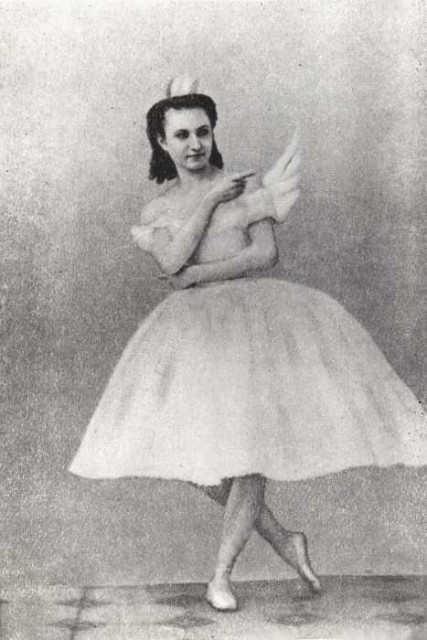
Anna Sobeshchanskaya as Odette in Julius Reisinger’s original production of Swan Lake, Moscow, 1877.
Due to the scene’s success, Vsevolozhsky, as director of the Imperial Theatres, invited Ballet Master Marius Petipa to mount a new production of Swan Lake. Petipa was a meticulous choreographer who promoted a noble classicism in his works and integrated purity of the French school with Italian virtuosity. Petipa entrusted his assistant, Ivanov, however, to choreograph the Act IV lakeside scene, to repeat the soft, expressive qualities of movement that he displayed to great effect in the Act II lakeside scene.
Petipa made some changes: von Rothbart, originally an accomplice to Princess Odette’s wicked stepmother, became the villain. Petipa added the 32 fouettés for the character of Odile in Act III. And, because Petipa disliked unhappy endings, he had the Prince and Odette re-unite after death in a “temple of eternal happiness and bliss”.
Fourteen months after Tchaikovsky’s death, this new version premiered at the Mariinsky Theatre on 15 janvier, 1895. Critics, however, were not easily persuaded. “The music bores because of its meaninglessness and banality,” one wrote and from another, “Swan Lake will hardly become a repertoire ballet and no one will regret it.”
Yet the choreography was more closely aligned with the mood and expressiveness of the music. And the music itself was more than just mere accompaniment or decoration but an essential element of the dance-drama. Tchaikovsky's score was more symphonic and sophisticated, and the production more coherent, than ballets prior to Swan Lake. The work heralded a new era of ballet and admiration for its innovations grew over time.
And so Swan Lake has endured and is beloved. It has been staged and re-interpreted countless times, often with elements of Ivanov’s choreography remaining intact. To this day, Swan Lake is a staple in the classic repertoire because of its demanding choreography, the lead female's dual role, a fascination with the Prince’s quest for the ideal, and, of course, the challenge and beauty of Tchaikovsky’s score.
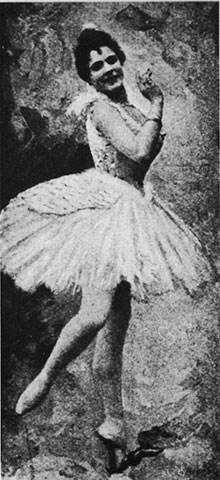
Pierina Legnani as Odette (1895).
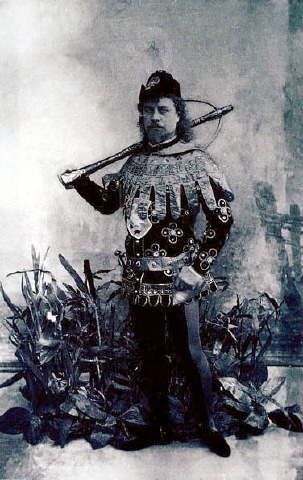
Pavel Gerdt as Prince Siegfried (Mariinsky Theatre, 1895).
Swan Lake is onstage 10 au 26 juin 2022.
Learn More About Swan Lake
All images courtesy of Wikipedia.
